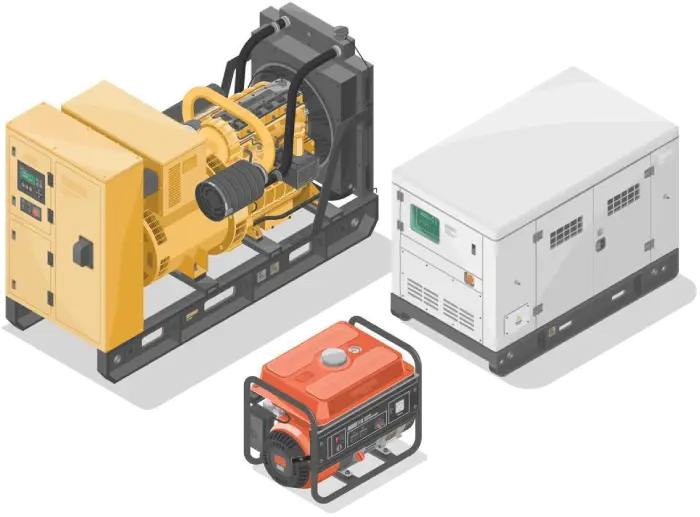Regulatory Trends and the role of Digitalization and AI

Navigating the Regulatory Shift: How Global Industrial OEMs Can Leverage Digitalization to Stay Ahead
The industrial equipment landscape in Europe is undergoing a major transformation, driven by new regulations such as the Right to Repair, Carbon Border Adjustment Mechanism (CBAM), and the Digital Product Passport (DPP). These regulatory changes are reshaping how Original Equipment Manufacturers (OEMs) manage their installed base, service lifecycle, and aftersales operations. While compliance presents challenges, these regulations also unlock new opportunities for OEMs willing to embrace digitalization, AI, and data-driven technologies.
Understanding the Regulatory Landscape
- Right to Repair
The Right to Repair regulation aims to empower customers with the ability to repair their own equipment, reducing electronic and mechanical waste. For OEMs, this means increasing the availability of spare parts, improving product documentation, and ensuring extended service support. Failure to comply could result in loss of market share to third-party service providers and an increase in unregulated repairs that affect brand reputation. The Directive (EU) 2024/1799 was adopted on June 13, 2024, and entered into force on July 30, 2024. Member States are required to transpose it into national law by July 31, 2026. This directive aims to extend the lifespan of consumer products by imposing obligations on economic operators to repair products outside the seller’s liability period.
- Carbon Border Adjustment Mechanism (CBAM)
CBAM is the European Union’s approach to regulating the carbon footprint of imported industrial goods. This requires OEMs to track and report the emissions generated in their supply chains. Manufacturers that cannot accurately measure and optimize their carbon footprint may face higher tariffs and operational costs. The CBAM entered its transitional phase on October 1, 2023, and the definitive system will apply from January 1, 2026, aligning with the phase-out of free allowances under the EU Emissions Trading System (ETS).
- Digital Product Passport (DPP)
The Digital Product Passport initiative is part of the European Commission’s Sustainable Products Initiative, aiming to provide comprehensive traceability of a product’s lifecycle, including materials used, service history, and carbon footprint. While specific timelines are under development, the DPP will impact industries involved in manufacturing and distributing products within the EU, promoting transparency and sustainability.
- Ecodesign for Sustainable Products Regulation (ESPR)
The Ecodesign for Sustainable Products Regulation (ESPR) entered into force on July 18, 2024. This regulation aims to enhance the environmental performance of products throughout their lifecycle by setting specific ecodesign requirements. These include standards for durability, reparability, energy efficiency, recycling, upgradability, and waste reduction. Manufacturers will need to provide detailed product information upfront, necessitating updates to technical documentation. The first working plan under the ESPR is expected by April 19, 2025, prioritizing product groups such as iron, steel, aluminum, textiles, furniture, and chemicals.
- EU Data Act
Scheduled to take effect in autumn 2025, the EU Data Act introduces measures to ensure data accessibility and protection for users of connected products. OEMs will need to design products that allow users to easily and securely access, use, and share generated data. Manufacturers must adhere to Fair, Reasonable, and Non-Discriminatory (FRAND) terms for data access within the EU, promoting fair competition and innovation.
How Technology Can Help OEMs Adapt and Thrive
A Digital Twin is a virtual replica of physical equipment that enables real-time monitoring, predictive maintenance, and performance optimization. By integrating Digital Twin technology, OEMs can:
-
-
-
- Reduce downtime and enhance after-sales service.
- Provide customers with better repair and maintenance guidance.
- Optimize sustainability metrics by tracking energy efficiency and emissions.
-
-
- AI-Driven Predictive Maintenance
AI-powered analytics and hyper-personalization can help OEMs predict equipment failures before they occur, reducing unplanned downtime. This ensures that service interventions are timely and cost-effective while aligning with the principles of Right to Repair and DPP compliance.
- Data-Driven Sustainability and Compliance
By leveraging data analytics, OEMs can:
-
-
- Accurately measure and report carbon emissions for CBAM compliance.
- Monitor resource usage to optimize circular economy initiatives.
- Provide customers with detailed Digital Product Passports for regulatory adherence and transparency.
-
A comprehensive aftersales management platform enables OEMs to:
-
-
- Automate spare parts availability and tracking.
- Offer self-service portals that align with Right to Repair mandates.
- Enhance customer engagement through AI-powered support and service recommendations.
-
- Hyper-Personalization in Aftersales Services
Hyper-personalization, powered by AI and machine learning, allows OEMs to offer highly customized service experiences based on customer behavior, equipment usage patterns, and predictive analytics. This can include:
-
-
- Tailored maintenance recommendations based on real-time equipment performance data.
- AI-driven support that proactively suggests the right parts and service actions.
- Personalized digital service portals that enhance user experience and efficiency.
-
Accurate and efficient parts identification is crucial in the context of the Right to Repair and DPP regulations. Leveraging technologies such as AI-powered image recognition, QR codes, and blockchain-based tracking, OEMs can:
-
-
- Ensure faster and more accurate spare parts identification for customers and service teams.
- Reduce errors in part selection, minimizing unnecessary replacements and waste.
- Improve inventory management and logistics, optimizing the availability of high-demand components.
-
Conclusion
The Road Ahead: Turning Compliance into Competitive Advantage
Rather than viewing new regulations as obstacles, OEMs should see them as catalysts for transformation. By adopting Digital Twins, AI, Data Analytics, Hyper-Personalization, and Smart Parts Identification, manufacturers can not only comply with regulations but also improve service outcomes, enhance sustainability, and create long-term business value.
Industrial OEMs that invest in digital solutions today will not only meet regulatory demands but will also future-proof their businesses in an increasingly competitive and sustainability-driven market. The choice is clear: adapt and lead, or risk falling behind.
How is your company preparing for these regulatory shifts? Connect with us to explore how a white-labelled aftersales solution can help you simplify and accelerate these changes while unlocking new business opportunities.
